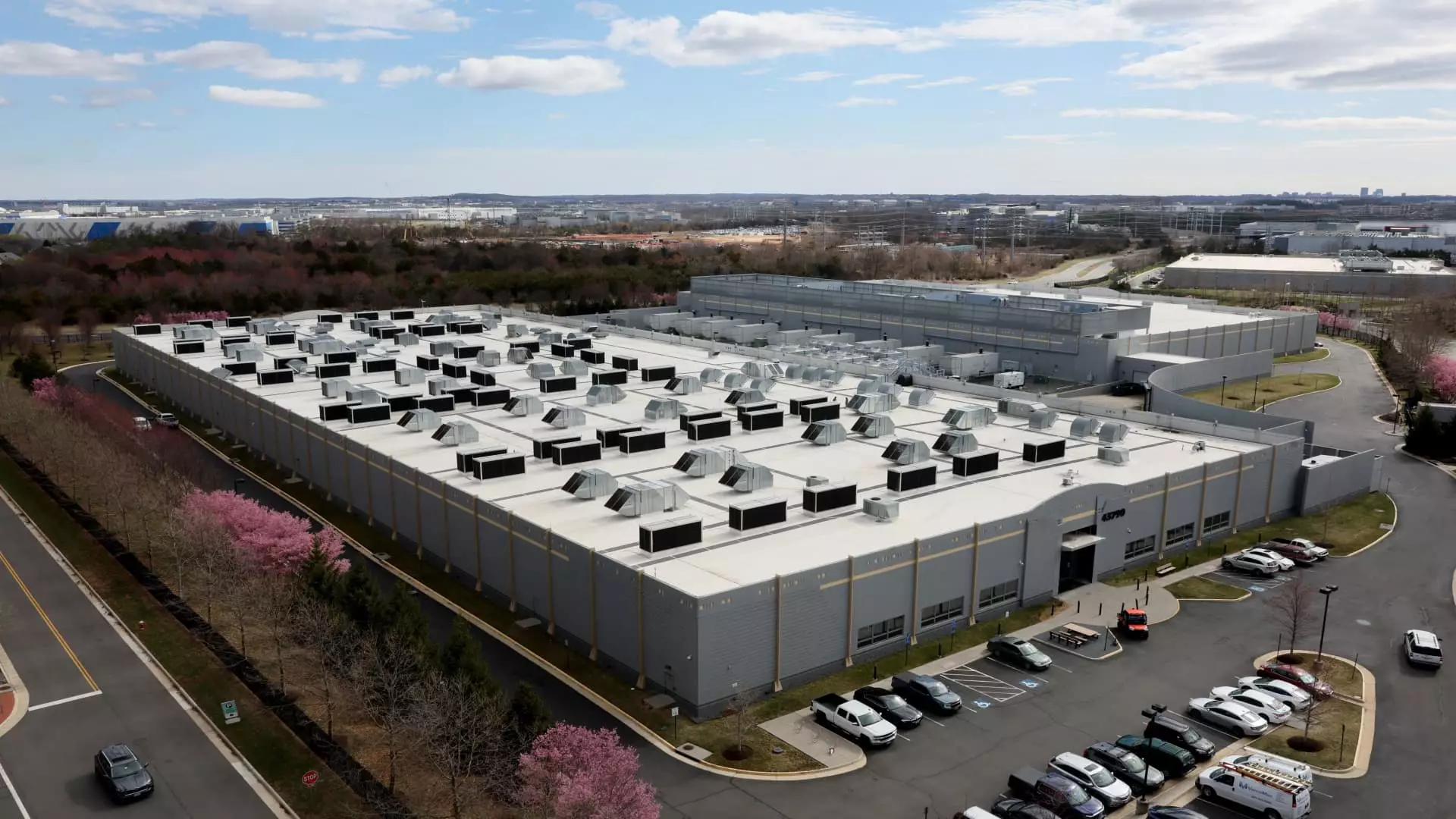In a monumental decision that carries immense implications for both energy and technology sectors, Abu Dhabi’s sovereign wealth fund, ADQ, has allied with U.S.-based private equity firm Energy Capital Partners (ECP) in a multi-billion-dollar initiative. They plan to channel a staggering $25 billion into the growing power generation needs that come hand-in-hand with the tech industry’s rapid expansion. This partnership is not merely a financial investment; it represents a significant move to stake a claim in the burgeoning U.S. energy landscape, particularly centered around the burgeoning demand for data centers.
This alliance arrives at a time when the United States is witnessing a seismic shift in electricity consumption patterns. After years of sluggish growth, demand is expected to surge significantly—driven primarily by an insatiable appetite from tech giants including Amazon, Microsoft, and Google, who are racing to dominate the artificial intelligence frontier. The primary objective of this partnership revolves around the establishment of captive power plants, strategically positioned to address the immediate energy requirements of these massive data centers. The intent is clear: to provide a robust, reliable power supply that aligns with an ever-growing energy appetite.
Understanding the Stakes: Climate and Infrastructure
However, one cannot overlook the broader implications of such a deal in the current climate crisis narrative. While it offers a pathway to meet burgeoning energy needs, the environmental ramifications cannot be ignored. Are we merely facilitating an upward spiral in energy consumption that may compromise sustainability and environmental well-being? There’s inherent irony in promoting infrastructure for data centers—already notorious for their colossal energy consumption—while the world grapples with the dire consequences of climate change.
ADQ claims to bring considerable capital—totaling $249 billion in assets—while ECP is touted as the largest private owner of energy assets in the U.S. Yet, the key question remains: can the partnership pivot towards renewable solutions that lessen environmental impacts, or are these investments simply perpetuating a cycle of reliance on fossil fuels? Frankly, a partnership such as this requires rigorous monitoring if we hope to align our ambitious technological advancements with sustainable practices.
The Technological Arms Race: Power Meets AI
Consider this: the U.S. Department of Energy projects that data center electricity usage will likely double or even triple by 2028. Industries that once had manageable energy requirements now find themselves on a collision course with insatiable data consumption driven by machine learning and artificial intelligence. The 2024 International Energy Agency report predicts that the data center sector will account for greater than one-third of additional electricity demand by 2026, and globally, consumption could reach a staggering 1,000 terawatt hours by the same year.
This scenario presents a paradox: while investment in power generation infrastructure could drive innovation and economic growth, it may inadvertently throttle global efforts to transition toward renewable energy solutions. With political power plays at the forefront, as seen with ADQ’s chairman Sheikh Tahnoon bin Zayed Al Nahyan meeting key power players in Washington, the temptation to pursue short-term energy gains could overshadow long-term sustainability goals.
A Call to Action: Balancing Growth with Responsibility
The recent partnership between ADQ and ECP could indeed be a transformative force within the energy landscape, setting the stage for a new era of power generation. But the stakes are high and so are the responsibilities that accompany such power. It’s crucial that this ambitious initiative does not become an excuse to ignore our environmental commitments. Investment strategies must prioritize renewable energy, and institutions should be held accountable for implementing sustainable practices across their infrastructure projects.
As this energy experiment unfolds, the spotlight will not just be on the economic returns but on how these decisions shape our future. Will this partnership turn into a catalyst for meaningful sustainability, or will it reinforce outdated paradigms of energy consumption? The answers we forge in response to these questions will ultimately define both our technological advancements and environmental stewardship in the years to come.

